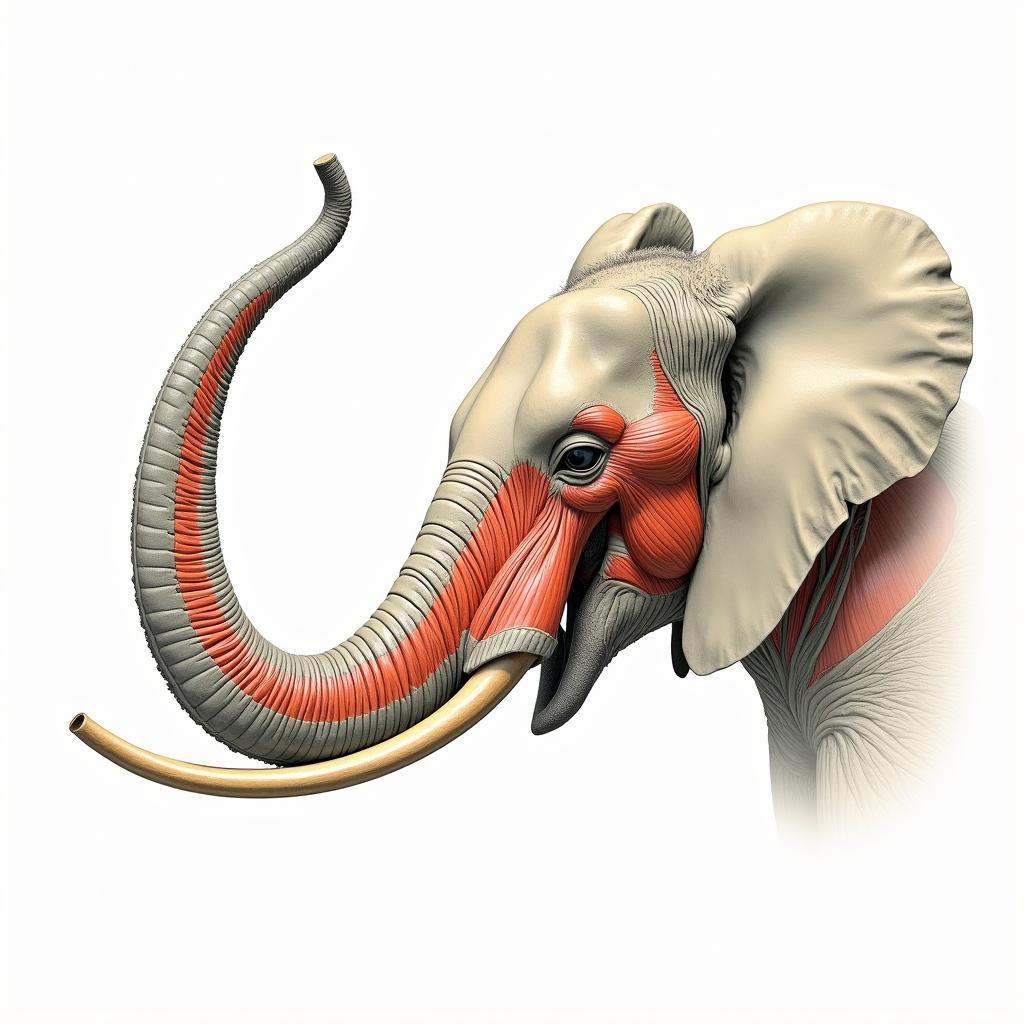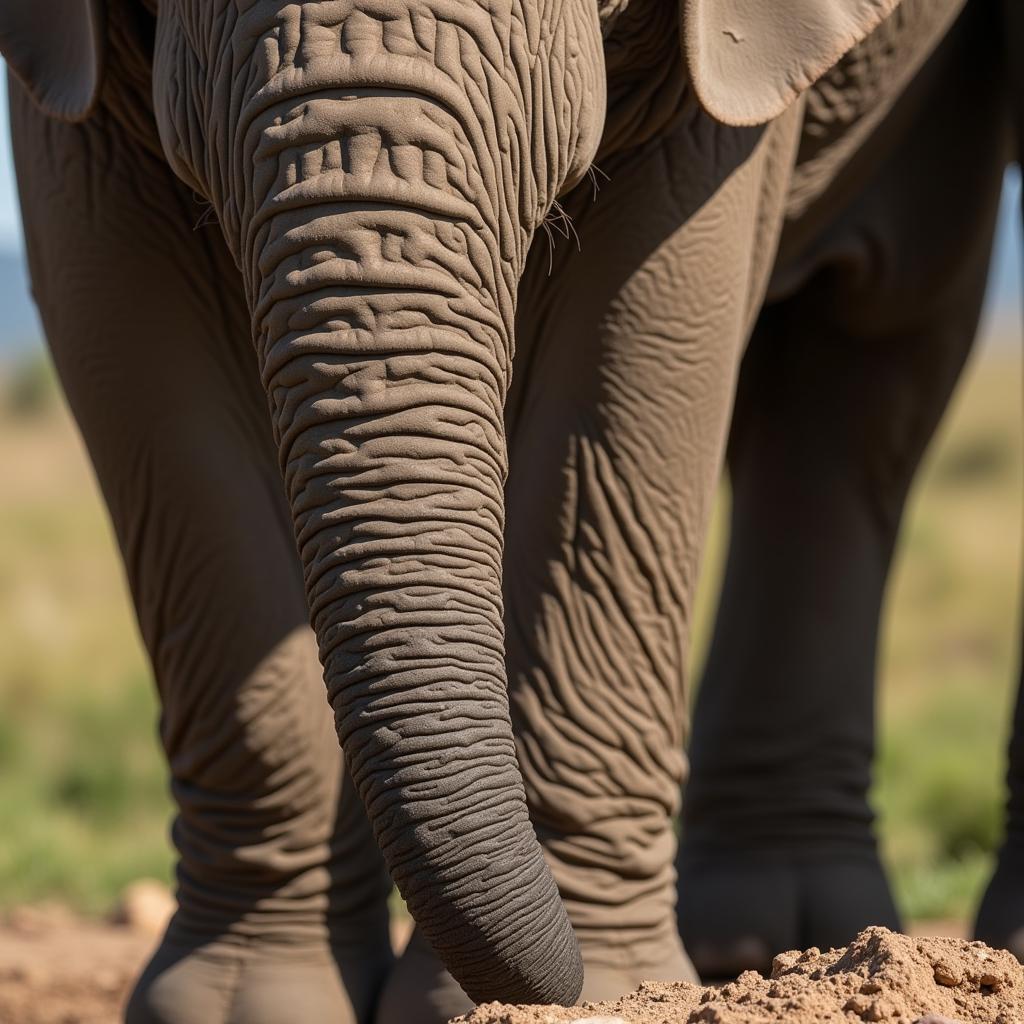The African Elephant Nose: More Than Just a Trunk
The African Elephant Nose, more accurately called a trunk, is one of the most recognizable and fascinating features in the animal kingdom. This incredible appendage is a marvel of evolution, serving a multitude of purposes that are crucial to the elephant’s survival. From breathing and trumpeting to drinking and delicately picking fruit, the elephant’s trunk is a testament to nature’s ingenuity.
The Anatomy of an Engineering Marvel
The African elephant’s trunk is an extension of its upper lip and nose, a fusion that has resulted in an incredibly versatile organ. It’s made up of over 150,000 muscle fascicles, bundles of muscle fibers, which give it remarkable strength and flexibility. Unlike human noses, the elephant’s trunk has no bones, allowing for a wide range of movement and manipulation.
 African Elephant Trunk Anatomy
African Elephant Trunk Anatomy
This muscular structure allows the elephant to lift objects as heavy as 700 pounds while also enabling the delicate task of picking up a single blade of grass. The trunk’s tip is equally impressive, featuring two finger-like projections in African elephants (Asian elephants only have one) that allow for fine motor skills, such as grasping small objects and delicately removing bark from branches.
A Multi-Purpose Tool for Survival
The African elephant’s trunk is vital for its survival, playing a crucial role in various aspects of its daily life.
Breathing, Smelling, and Communicating
The elephant uses its trunk to breathe, drawing air into its lungs through the nostrils located at the tip. Its sense of smell is highly developed, and the trunk is constantly sampling the air, picking up scents that help the elephant locate food, water, and potential mates.
Furthermore, the trunk is the elephant’s primary means of vocal communication. From low rumbles to high-pitched trumpets, the sounds produced by the trunk convey a range of emotions and messages, strengthening social bonds within the herd.
Eating and Drinking like a Pro
The African elephant’s trunk is indispensable when it comes to feeding. It can graze on grass, strip leaves from branches, and even pull down entire trees to reach the nutritious foliage. The trunk acts like a giant straw, allowing the elephant to suck up water and then spray it into its mouth.
Social Interactions and Beyond
Beyond its practical applications, the African elephant’s trunk also plays a significant role in social interactions. Elephants use their trunks to greet each other, caress their young, and even discipline unruly herd members.
“The trunk is like an elephant’s Swiss Army knife,” explains Dr. Anya Patel, a leading researcher in elephant behavior. “It’s a tool for survival, a communication device, and a symbol of their social intelligence.”
A Sensory Powerhouse
The African elephant’s trunk is covered in sensitive skin, particularly at the tip, which is richly endowed with nerve endings. This sensitivity allows the elephant to gather detailed information about its environment, such as the texture, temperature, and even the electrical signals of objects.
 African Elephant Trunk Touch
African Elephant Trunk Touch
This heightened sense of touch is crucial for navigating their surroundings, identifying food sources, and recognizing individuals within their herd.
The African Elephant Nose: A Symbol of Intelligence and Adaptation
The African elephant’s nose, the magnificent trunk, is more than just a prominent feature; it’s a testament to the power of adaptation and a symbol of the elephant’s remarkable intelligence. This multi-purpose organ is crucial for the elephant’s survival, communication, and social interactions, making it one of the most extraordinary evolutionary adaptations in the animal kingdom.





